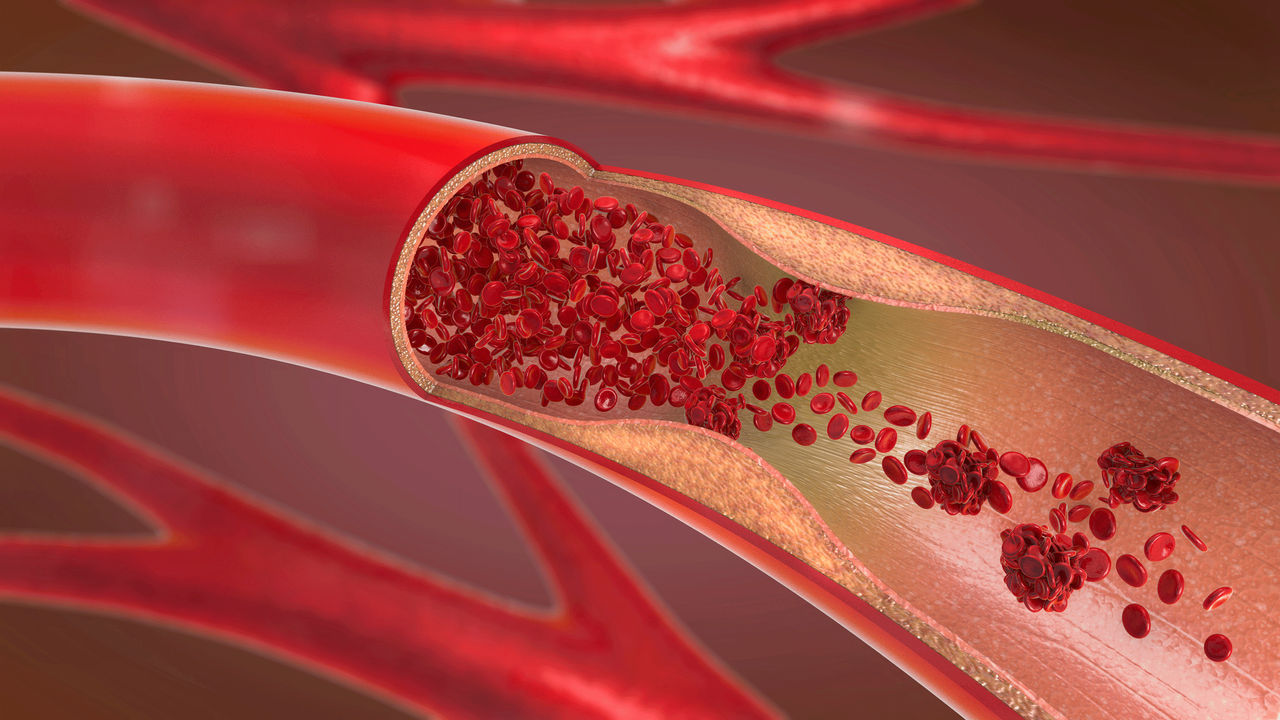Symptoms of a Blood Clot

We need our blood to clot so we stop bleeding, but in some cases a blood clot is life-threatening. Know the signs that you need to seek help.
It’s easy to cut yourself — while shaving or slicing vegetables, for example. You bleed a little, but the bleeding stops quickly because your blood clots. That clot then breaks apart.
Some people have conditions that make blood clots develop unnecessarily and linger. This can happen in a blood vessel anywhere in your body, though most often in your leg if you have been sitting for many hours.
Blood clots can travel and affect your lungs or heart. Blood clots in an artery that carries oxygen from your heart to your body or carries blood to your heart are serious.
The symptoms vary depending upon where the blood clot forms.
YOU MIGHT ALSO LIKE: What Is Deep Vein Thrombosis?
Who is at risk for a blood clot?
You’re most at risk if you:
- Have been in a hospital or recently left one or have been bedridden
- Are overweight
- Smoke
- Use hormonal contraception
- Are pregnant or just had a baby
- Have Crohn's disease or rheumatoid arthritis
Becoming dehydrated is also a risk factor.
Symptoms of a blood clot in your arm or leg
Deep vein thrombosis (DVT) is the name for a clot (thrombus) that forms in the deep veins in an arm or leg. Sometimes there are no symptoms at all. But DVT can lead to a clot lodging in your lungs, called a pulmonary embolism.
DVTs are most common when you sit still for a long time, perhaps on a long plane trip.
Seek help if you notice any of the following symptoms:
- Swelling. The swelling may be in one area, or your entire leg or arm could puff up.
- Change in color. Your limb might look red or blue. You can see a photo here.
- Itching or burning. You are more likely to feel itching or burning if you develop a clot in a vein close to your skin. But this still might need to be checked out.
- Cramp. A cramp in your calf or lower leg could indicate a blood clot.
- Pain. A dull ache or throbbing pain in your arm or leg may occur as a clot lingers. You may have pain when your touch the area.
- Pitting. If fluid builds up, you may notice it if you touch the area and a pit or dimple remains for a few seconds.
- Warm skin. DVT can make the skin around a painful area feel warm.
- Coughing. You may cough up blood or have trouble breathing if a clot moves to your lungs.
Symptoms of a blood clot near your heart or lungs
Seek help if you have:
- Severe pain in your chest and arm
- Sweating and trouble breathing at the same time
- Dizziness and pain in your chest
Symptoms of a blood clot near your brain
If you get a blow to the head that affects your brain, called a traumatic brain injury (or TBI), often a concussion, you might develop a blood clot.
Sometimes the walls of the blood vessels that bring blood to your brain develop clots.
A blood clot can travel from another part of your body to your brain, leading to a stroke.
Seek immediate help if you have:
- Sudden trouble speaking or seeing
- Sudden overall weakness
- A seizure, which might include temporary confusion, jerking movements, loss of consciousness, or extreme fear
Symptoms of a blood clot near your belly
The veins that drain blood from your intestines can develop blood clots triggered by diverticulitis, liver disease, birth control pills, and other causes.
The symptoms are easy to mistake for a stomach flu. They include:
- Nausea and vomiting
- Severe pain in your belly, especially after eating
- Bloody stools
- Bloated feeling
Symptoms of a blood clot near your kidneys
If you get a blood clot near your kidneys, they may not do their job of removing waste. This can be a cause of high blood pressure or, ultimately, kidney failure.
The symptoms include:
- Pain in the side of your belly, legs, or thighs
- Blood in your urine
- Fever
- Nausea or vomiting
- High blood pressure
- Sudden, severe swelling in your leg
- Trouble breathing
How to avoid blood clots
Stay active, lose extra weight, and don’t smoke.
On long flights, make sure you drink plenty of water, especially if you drink alcohol. Consider wearing compression socks.
YOU MIGHT ALSO LIKE: What Is Arteriosclerosis (Atherosclerosis)?
Updated:
November 04, 2022
Reviewed By:
Janet O'Dell, RN